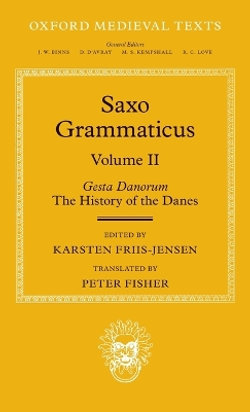of the Viking age and finished in 1285, after relating the earlier exploits of King Cnut Valdemarsson. The activities of the Danish kings were intimately bound up with the monarchies of Norway and
Sweden; Cnut the Great, one of Saxo's heroes, whose empire stretched as far as Britain and Iceland, was ruler of both these countries. In the last books Saxo took particular concern to describe the campaigns of Valdemar the Great and his warrior archbishop, Absalon, against the Wends of North Germany.The work is a prosimetrum, that is, in six of the first nine books he inserts poems, which are intended to parallel specimens of old Danish heroic poetry in Latin metres.
Saxo's Latin prose style is often complex, based as it is on models like Valerius Maximus and Martianus Capella, but he is a lively and compelling story-teller, often displaying a rather sly sense of
humour, and an interest in the supernatural. He is the first author to give a full account of Hamlet, whose adventures he relates at some length, the elements of which in a great many respects correspond surprisingly closely with the characters and incidents of Shakespeare's play.Volume II of Saxo Grammaticus contains books 11-16 of Saxo's work, mainly dealing with the history of the first Danish kings.



Share This Book: